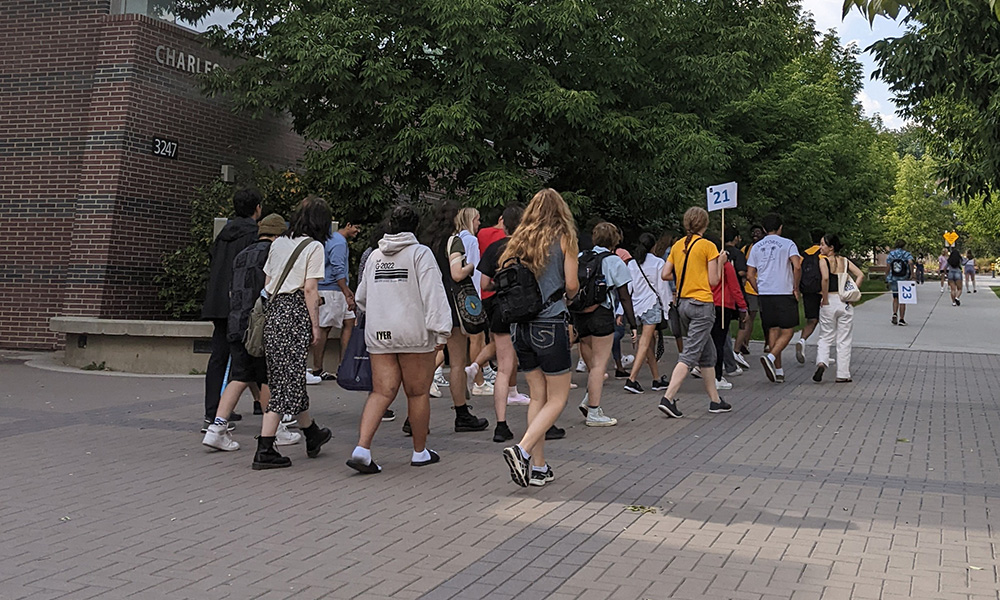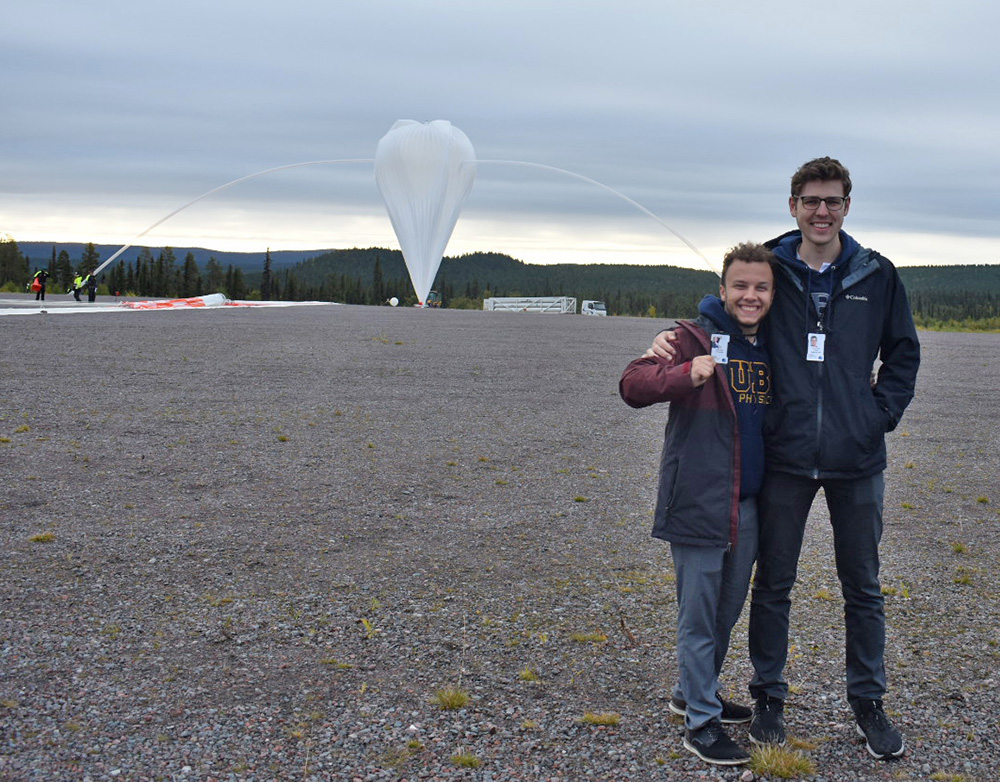
Crowds as large as this may become more common in countries around the world beyond 2022. The United Nations predicts the human population will hit 8 billion people on November 15.
If the United Nations’ prediction is accurate, the world’s 8 billionth baby will be born on Nov. 15.
The UN’s
World Population Prospects 2022 says the earth will crest 8 billion just before India surpasses China as the globe’s most populous nation—expected in 2023. Further, the UN predicts the world’s population will peak at 10.4 billion in the 2080s.
Yet, that same United Nations estimates 821 million people are undernourished, many of them being low-income consumers, women and children who are especially vulnerable. How will we feed and house all these people? What will they do for work? Who will teach them and keep the laws?
What is a world to do?
UBC Okanagan professors and researchers are acutely aware of the challenges that population growth presents. They are also keenly aware of the hard work necessary to navigate the planet’s growing population. Here is how their research is intersecting with population growth.
Robert Godin researches sustainable energy with a focus on the development of photocatalysts which can harness solar energy to sustainably produce high-energy chemical fuels such as hydrogen. He says technology has created something of a run-on effect with energy.
Robert Godin, Assistant Professor of Chemistry. Tel: 250 807 8438. Email:
robert.godin@ubc.ca
“A transition to sustainable energy in a world with 8 billion people is not only possible, but necessary. Population growth and increases in quality of life have driven the constant increase in energy demand. Yet, improved energetic efficiencies don’t balance the growth and often result in even greater energy consumption by making technology more accessible.”
Ross Hickey teaches management and economics at UBC. His research on charitable giving in Canada considers the distributional consequences of population growth. In particular, he studies how Canadians give to help others overseas.
“Population growth can be a major contributor to economic growth, but there are trade-offs: that growth may not be shared equally and the environmental costs associated with more people, goods and services may be difficult to address.”
Ross Hickey, Associate Professor of Economics. Tel: 250 807 8653. Email:
ross.hickey@ubc.ca
Katrina Plamondon’s contributions to a global pandemic treaty are made possible through her research into vaccine equity at UBC Okanagan. A 2020 Michael Smith Health Research Scholar, Plamondon leads national dialogue about equity and Canada’s role in global health research, with a special focus on issues of vaccine equity.
“Our collective, global health, solidarity and obligations to others beyond our own borders in the world matters. This requires us to think very differently about the planet, beyond international health.”
Katrina Plamondon, Assistant Professor of Nursing. Tel: 250 807 8681. Email:
katrina.plamondon@ubc.ca
Joanne Taylor is a Social Sciences and Humanities Research Council of Canada Postdoctoral Fellow in agricultural climate change adaptation and food security policy. Her work is at the crossroads of sustainable agriculture, climate change and population growth.
“Much of the global population is dependent on an industrialized food system that is currently at capacity and unable to fulfil global food demand due to stressors such as burgeoning population growth, inflation, inequality and catastrophic climate change which is severely impacting food security for the most vulnerable. It is imperative that agricultural adaptation is implemented and practised alongside mitigation policies as a key strategy to becoming more resilient in an increasingly extreme climate. More importantly, humanity must consider alternative food practices such as Indigenous food production and small-scale farming.”
Joanne Taylor, Postdoctoral Fellow. Email:
joanne.taylor@ubc.ca.
Lisa Tobber and her team of structural engineering researchers adopt a holistic perspective that considers the social, environmental and economic factors behind the vast engineering problems faced today. Combating natural disasters and the climate crisis takes the ingenuity and creativity of an inclusive group of diverse individuals with a range of expertise and lived experiences.
“Structural engineers will be challenged to build much-needed infrastructure to be safe, sustainable, resilient to climate disasters and earthquakes, quick to construct and economical. We need the construction industry to be innovation leaders, exploring the use of new materials, systems and tools. We also need to think about building for the future, design for the life cycle of the building and design for deconstruction.”
Lisa Tobber, Assistant Professor of Engineering. Email:
lisa.tobber@ubc.ca.
Nathan Pelletier is an industrial ecologist and ecological economist whose research addresses the intersection of food system sustainability measurement and management.
“Access to food of sufficient quality and quantity is a fundamental human right that is currently denied to hundreds of millions of people. Food systems are also a key driver of environmental change, as well as particularly susceptible to increasing climate unpredictability. Identifying means to sustainably feed the growing human population constitutes a profound challenge whose resolution requires research to identify and support implementation of a spectrum of technological interventions, dietary changes and redistributive efforts.”
Nathan Pelletier, Associate Professor of Biology. Tel: 250 807 8245. Email:
nathan.pelletier@ubc.ca.
The post
Global population is expected to reach 8 billion next week appeared first on
UBC Okanagan News.









